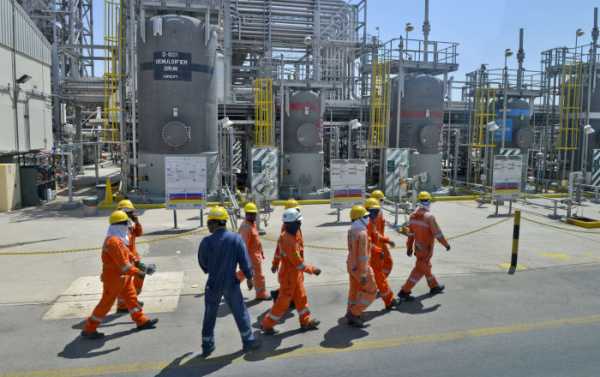
A stand-off between Russia and OPEC over what to do with oil production has led to major declines in oil prices and global stock markets. But it seems that a downward move was inevitable – for a number of reasons.
On Monday, crude prices saw their worst day in four years. The reason: a collapsed oil deal between OPEC and Russia. Russia refused to accept the terms of a new deal, with a crunch meeting in Vienna collapsing on Friday after hours of fruitless talks.
The oil cartel previously had a deal in place to take 2.1 million barrels per day out of the market in order to support crude prices. The OPEC+ agreement, which also involves Russia and a handful of other non-OPEC members, was set to expire at the end of this month. OPEC wanted to slash oil output by an extra 1.5 billion barrels per day, on top of what had already been agreed upon. Non-OPEC members were asked to shoulder a third of the additional burden; Russia’s quota would almost double.
Why produce less oil? Major suppliers are concerned by falling global energy demand because of the coronavirus epidemic, which is causing oil prices to go down. By next year, global oil consumption is expected to fall for the first time since 2009. Estimates range from a fall of 0.9 percent (the most conservative one by the International Energy Agency) to 5 percent in a worst-case scenario.
OPEC wanted to offset that fall by reducing the oil supply. Russia wanted to leave things as they were. That is, extend the deal without additional limits.
Too costly for Russia?
“It’s every man for himself,” says Konstantin Simonov, director of Russia’s National Energy Security Fund. “Russia essentially had a dilemma: [to refuse a deal or] to cut like a knife and shut down the wells.”
Riyadh, the world’s biggest crude oil producer and de facto OPEC leader, retaliated by announcing a dramatic discount in oil prices for its key customers — of $6 to $8 per barrel — and pledged to increase its output by 20 percent, no longer bound by a deal with Russia. This is when oil prices crashed.
Many observers describe the episode as a staring contest. The country that stands to lose the most will have to blink first. The breakeven oil price – one at which the expenses and profits are equal – stands at $80 to $85 a barrel for Saudis. Russia can afford to sell oil at $42 per barrel, and the finance ministry said it has enough rain day funds to withstand up to 10 years if the oil prices were to trade in a range of $25 to $30 per barell.
The broader picture
Alexander Frolov, deputy director of the National Energy Institute in Moscow, believes that Saudi Arabia is not interested in a price war with Russia at all.
He argues that Riyadh’s oil strategy, including proposed cuts, comes down to one goal: maximise the profits. “We’d like to do it too, but our approach on how to do this is different,” he adds.
By contrast, Saudi Arabia, in his view, wants prices to grow “here and now. They don’t want to wait for industrial production in China and oil demand to grow.”
“They think that this is a long-term [objective] and that oil output should be reduced so that the cash flow remains the same. They don’t want to fight Russia on the price field – just the opposite. Their threats to increase [output] to 12 million barrels [per day] should be interpreted as ‘Let’s sit at the negotiating table’. I don’t think they had expected this to cause such a strong reaction on the markets, which were already bracing for negative news, and cause a fall and panic.”
Sourse: sputniknews.com






